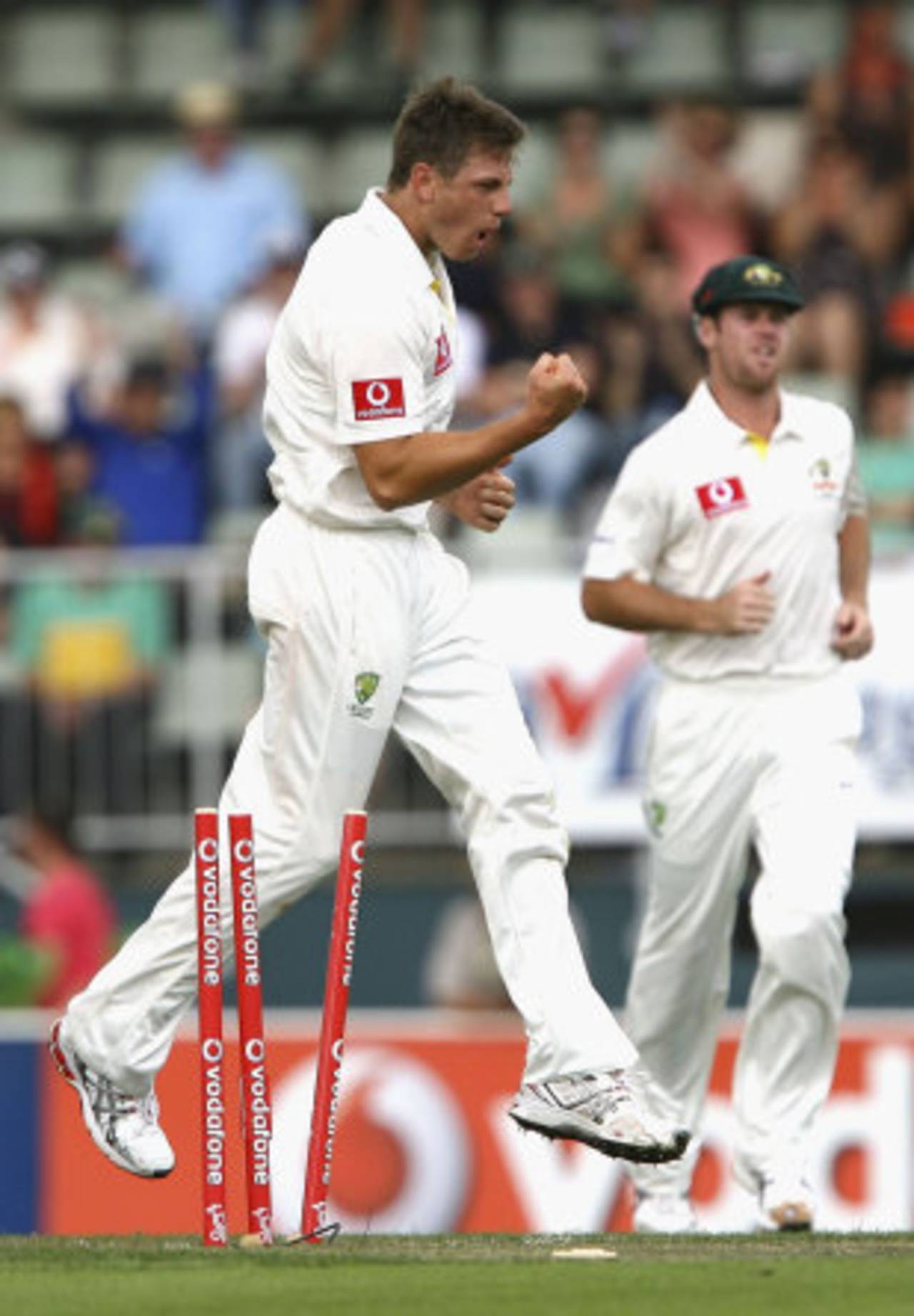At 10 o'clock on an overcast Hobart morning,
Michael Clarke stood in the middle of the Bellerive Oval and tossed the coin. It landed on a pitch described by the former fast bowler Geoff Lawson as the greenest Test surface he had ever seen. Australia's fast men were in the change rooms shouting "bowl, bowl!" Whether he looked up at the sky or down at the ground, or listened to the yells from his colleagues, Clarke could see it was a bowl-first scenario.
For the first time in 70 Tests, Australia sent the opposition in. By making that decision, Clarke showed faith in his young bowlers and flexibility in his thinking. Both are encouraging signs for Australia's new captain. Clarke's predecessor, Ricky Ponting, became allergic to sending in his opponents after the
Birmingham Ashes Test of 2005, when he did so with an attack missing Glenn McGrath, and watched England set up victory by scoring 407.
"We'll bat," Ponting said
at the SCG last January. Pakistan skittled Australia for 127. "We'll bat," he said again
at Headingley a few months later, under cloudy skies in a terribly difficult batting environment. Australia collapsed for 88 and lost the Test. At least until he gets burned by his own Edgbaston-like experience, Clarke seems willing to be adaptable in his approach.
Not that batting first in these Hobart conditions would be the conservative option. It would have been a serious gamble, especially with such an inexperienced top order. Rarely in recent years have good teams lost after choosing to field first. Since Australia's Birmingham mistake, South Africa have sent their opponents in ten times for only two losses, while Sri Lanka and England have been defeated only once in the nine times they have done it.
But for the plan to work, the attack must be able to bowl to a plan. For Australia on the first day in Hobart, the strategy was simple: bowl full and fast, swing the ball and encourage the drive. The conditions would help, and the way New Zealand had batted in Brisbane, there was every chance the batsmen would contribute to their own demises.
James Pattinson and
Peter Siddle delivered precisely what Clarke wanted in the first session. Nominally the leader of the attack, Siddle has been outshone by his younger colleagues over the past few Tests. Usually a hit-the-wicket bowler who works from back of a length, Siddle adapted his game to the circumstances.
In his first over, he produced a beautiful outswinger that was full enough to encourage Martin Guptill to play and the ball was edged behind. He varied his movement - Ross Taylor was lbw to a delivery that jagged back in - and it was not until after lunch that he fell into old habits, bowling too short. Not surprisingly, it was around that time that New Zealand steadied, briefly.
"He's bowling as fast as he ever has bowled and he's swinging the ball now," Pattinson, a state and club team-mate of Siddle, said. "I think that's a lot to do with Craig McDermott working with us in the off-season. He's been great for us. Sidds has always been able to swing the ball but not consistently. Now he's doing it almost every ball and at good pace, 150-plus."
Pattinson was even better. His outswinger to remove Brendon McCullum was almost the perfect delivery. He angled the ball in and pitched it around off stump, enticing it to move away from the batsman as it passed him. McCullum duly edged behind. Whereas Ben Hilfenhaus consistently swung the ball too wide and too early during the Ashes, Pattinson has shown the ability to curl it later and from a straighter line. It is a dangerous mix. He deserved his second five-wicket haul in two Tests.
Mitchell Starc was unable to make the most of the favourable conditions. Like another Mitchell who bowls left-arm pace, Starc was erratic. His two wickets came with a bad ball down leg side that was tickled behind and a shorter, wider delivery that was chopped on. He is the most vulnerable member of the attack if Ryan Harris recovers from injury for Boxing Day.
New Zealand cannot be absolved of blame. The delivery that removed Guptill was good, but his shot was poor - he turned the bat and was trying to clip to leg in the second over of the day from a ball just outside off stump. Williamson could so easily have glanced Starc fine for four, but he gave Brad Haddin a catch. Reece Young played on when he tried to leave a ball.
But fewer men caused their own downfall than at the Gabba. They were simply beaten by the attack and the conditions. And for that, Australia can thank Clarke for backing his bowlers.
